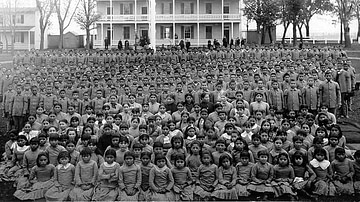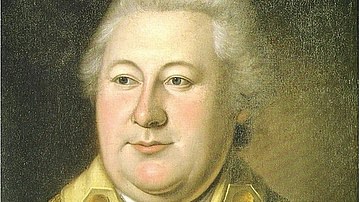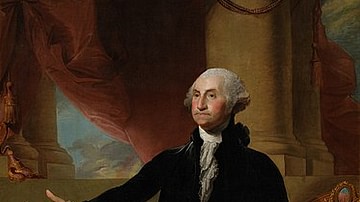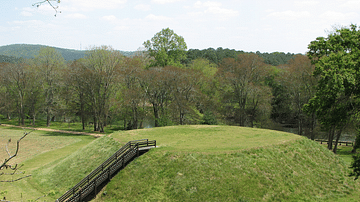Search
Search Results

Article
George Washington's Farewell Address
George Washington's Farewell Address was published in a Philadelphia newspaper on 19 September 1796, near the end of his second and final presidential term. In it, Washington explains his reasoning for not seeking a third term and warns his...

Article
Buffalo and Eagle Wing & The American Indian Boarding School
Buffalo and Eagle Wing is a legend of the Plains Indians culture of North America, which is part origin myth and part cautionary tale on the importance of keeping one's promises. Although scholars agree on the general provenance of the tale...

Definition
Henry Knox
Henry Knox (1750-1806) was a Boston-born bookseller who became a general of the Continental Army during the American Revolutionary War (1775-1783) and served as the army's Chief Artillery Officer. After the conflict, he was appointed the...

Definition
Washita Massacre
The Washita Massacre (Battle of Washita River) was the slaughter of the village of the Southern Cheyenne Chief Black Kettle (l. c. 1803-1868) and the peace chiefs aligned with him on 27 November 1868 at the hands of the 7th Cavalry led by...

Definition
US Presidential Election of 1789
The US presidential election of 1789 was the first presidential election to take place after the ratification of the United States Constitution. Held on 4 February 1789, it resulted in the unanimous election of George Washington (l. 1732-1799...

Article
Manabozho Tales
Manabozho tales are the stories of the trickster figure and culture hero of the Ojibwe (Ojibway/Chippewa) and other Algonquin Native American nations of present-day northern United States and southeast Canada. Manabozho is a supernatural...

Definition
Nazi-Soviet Pact
The Nazi-Soviet Pact, also called the Molotov-Ribbentrop Pact after the respective foreign ministers of the USSR and Germany, was a non-aggression agreement signed in August 1939. The pact allowed the leader of Nazi Germany Adolf Hitler (1889-1945...

Article
Ten Great Native American Mound Sites
The Native Americans of Pre-Colonial North America built thousands of mounds across the continent which served various purposes and sometimes reached heights over 100 feet. Many of the mound sites were thriving urban centers – such as Cahokia...

Definition
James Madison
James Madison (1751-1836) was a statesman, diplomat, and a Founding Father of the United States, who served as the fourth US president from 1809 to 1817. He played an important role in the drafting of the United States Constitution and the...

Definition
Patrick Henry
Patrick Henry (1736-1799) was a Virginian lawyer and politician who played a vital role in the American Revolution (c. 1765-1789). Known for his brilliant oration, including the famous Give Me Liberty or Give Me Death speech, Henry served...